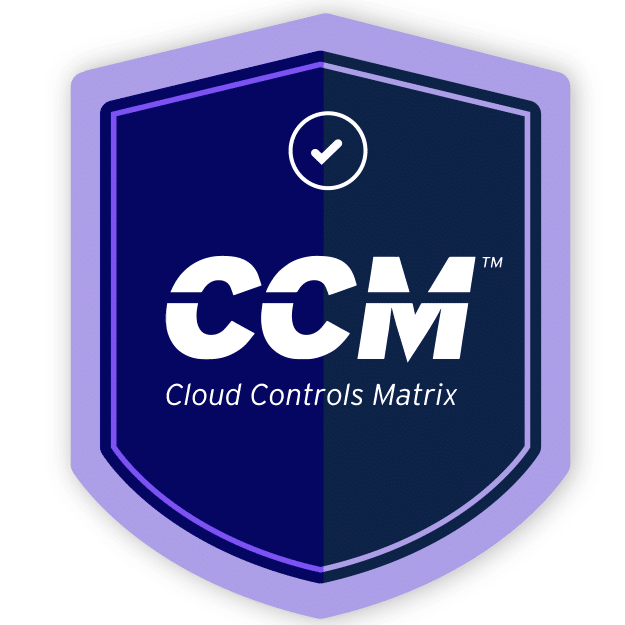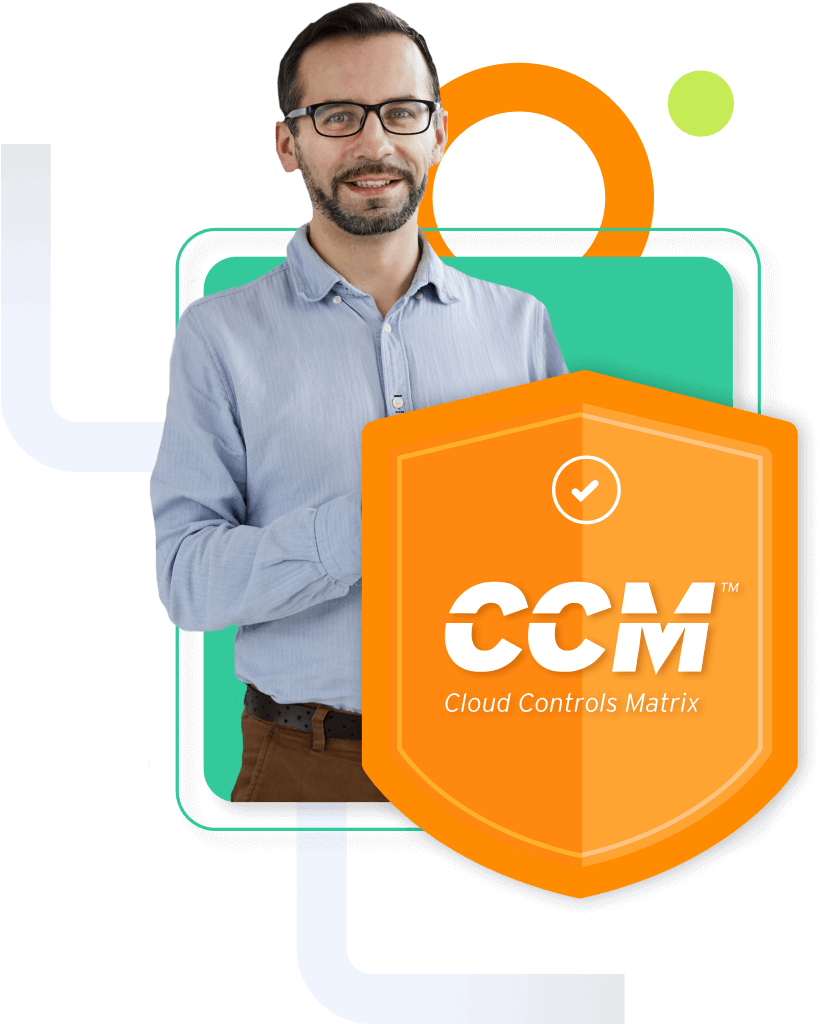
The Ultimate Guide to
Cloud Security Alliance Cloud Controls Matrix (CCM)
What Is Cloud Security Alliance Cloud Controls Matrix
Your cloud solution company’s prospective customers need assurance that your information security control environment is managed in a way that meets their security requirements. The Cloud Security Alliance Cloud Controls Matrix (CCM) is a CSA Cloud Controls Matrix and widely used cloud control matrix that provides fundamental security principles to guide cloud vendors and assist prospective cloud customers in assessing the overall security risk of a cloud provider. It is cross-walked to several other industry-accepted standards, regulations, and control frameworks to simplify audits and is often treated as a practical cloud computing matrix for cloud security responsibilities.
According to the Cloud Security Alliance, the Cloud Controls Matrix provides fundamental security principles to guide cloud vendors and assist potential cloud customers in assessing the overall security risk of a cloud provider. Organizations implement this cloud compliance matrix as a way to strengthen their existing information security control environments. It delineates control guidance by service provider and consumer and differentiates according to the specific cloud model type and environment.
The CCM contains 16 control domains that are cross-walked to other industry-accepted standards, regulations, and control frameworks to simplify audits. The crosswalks include but are not limited to: ISO 27001/27002/27017/27018, NIST SP 800-53, AICPA TSC, ENISA Information Assurance Framework, German BSI C5, PCI DSS, ISACA COBIT, NERC CIP, and many others.
The latest version of CCM (v3.0) contains the following domains:
The Cloud Security Alliance has developed a certification program called STAR. The value-added CSA STAR certification verifies an above and beyond cloud security stance that carries weight with customers. This overachiever’s set of standards may be the best asset for customers looking to assess a vendor’s commitment to security, and it is a must for all organizations looking to cement customer trust. Further, the STAR registry documents the security and privacy controls provided by popular cloud computing offerings so cloud customers can assess their security providers to make good purchasing decisions.
Who needs to implement CSA CCM?
If you are a cloud vendor and your organization wants to conduct business with the government or any security-conscious enterprise, achieving cloud security certifications is the procurement gate. Cloud compliance frameworks like the CSA CCM – sometimes referred to as CCM cloud or “cloud CCM” requirements – provide the guidelines and structure necessary for maintaining the level of security your customers demand.
Additionally, these frameworks will help you navigate a regulatory minefield and avoid the steep financial and reputational cost of non-compliance. Most importantly, implementing a compliance framework will allow your organization to showcase your commitment to privacy and data protection. This will keep you out of trouble with regulators and boost credibility and trust with your customers.
CCM: Frequently Asked Questions
Hyperproof for CSA CCM Compliance
Hyperproof is a continuous compliance software solution that helps organizations implement security standards, regulations, and control frameworks efficiently and monitor their control environment on an ongoing basis. We support implementation of CSA CCM by allowing you to:

Hyperproof partners with professional service firms with proven track records and deep expertise in helping organizations get CSA CCM ready. Our partners help customers design their compliance programs, build them out, and conduct readiness assessments to ensure there are no surprises when the audit occurs. If you need a referral, we’d love to talk.
Ready to see
Hyperproof in action?









